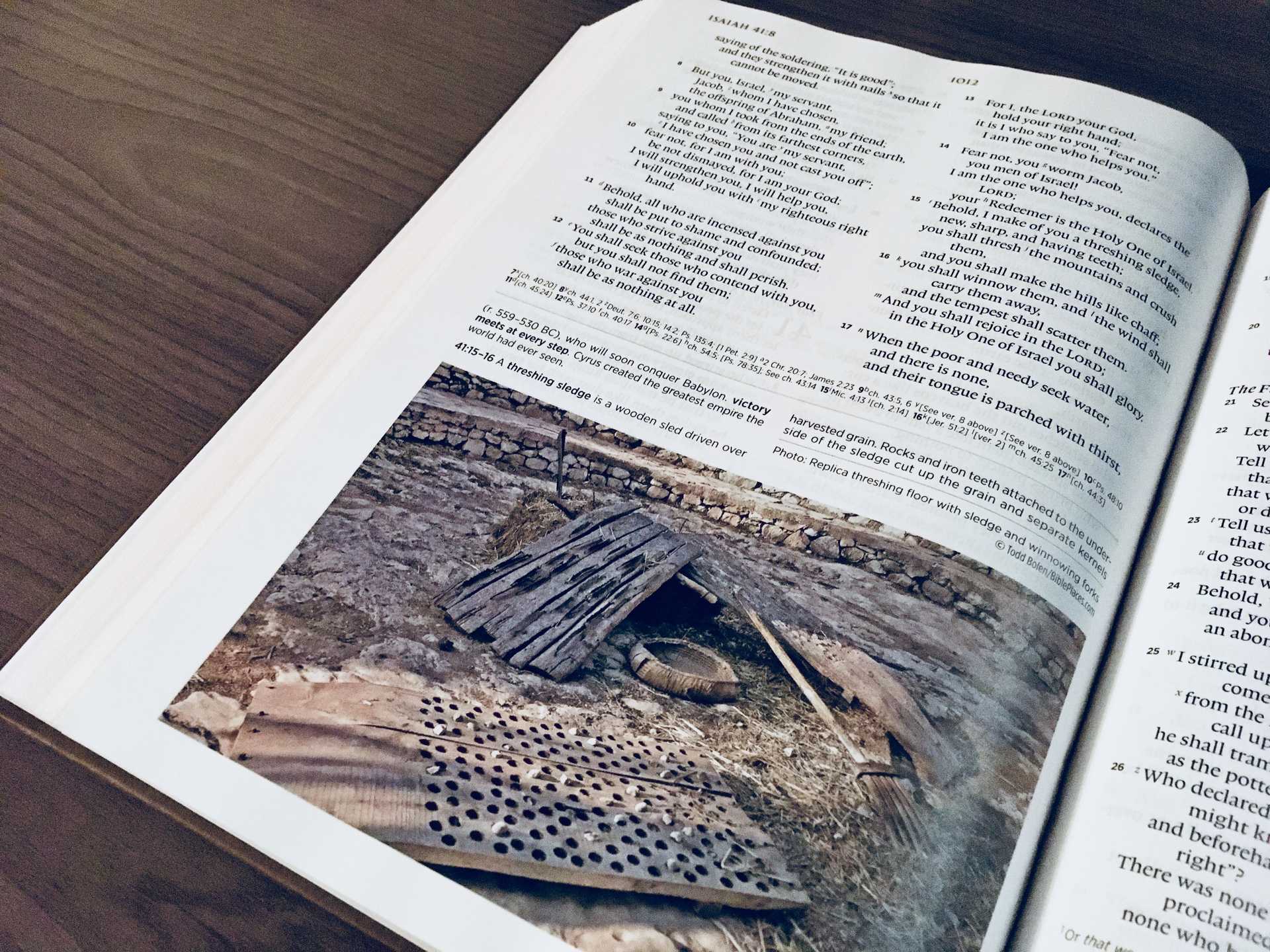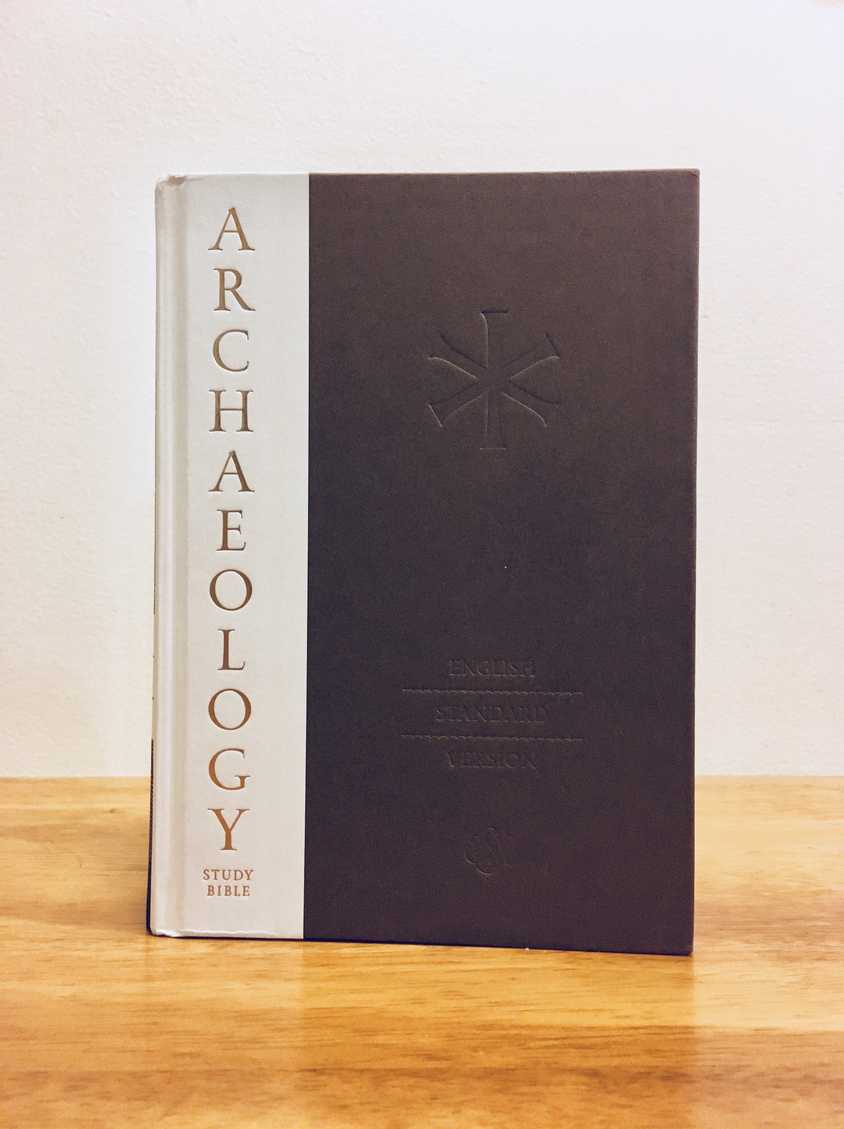
ESV Archaeology Study Bible [A Review]
I have a love-hate relationship with study Bibles. On the one hand, the Bible is thousands of years old, and you'd be a fool to solely rely upon your own intuition about what it all means. That's not to say there's some mystical secret da Vinci code hidden between the lines or something, but only that you should have a healthy suspicion of your natural intuitions about any book this old or from such a different cultural context. Because of this, a study Bible can be a great boon! On the other hand, study Bibles can gently ease the mind into a sort of cognitive lethargy; rather than pressing your synapses into the cracks and crevices of the text to hunt down meaning, you can simply glance at the bottom of the page and a pre-packaged answer to whatever question you might've asked is right there. As Patrick Rothfuss puts it, "It's the questions we can't answer that teach us the most. They teach us how to think. If you give a man an answer, all he gains is a little fact. But give him a question and he'll look for his own answers."1 There are answers to the questions the Bible raises, but Rothfuss is right to say that asking questions is part and parcel to the learning process.
With that out of the way, I must say that I own a few different study Bibles, and I have bought some on occasion for others as gifts. They are tools, and they are the right tools in some circumstances and the wrong tools in others. I recently got a copy of Crossway's ESV Archaeology Study Bible, (ESVASB) and I can confidently say that it would be quite a sharp tool for many readers. So who would benefit from it?
The most obvious audience of the ESVASB is anyone who is unfamiliar with the field of near eastern archaeology, which is just about everyone. Beyond that, it's also positioned to fill in gaps of historical-cultural context that cannot be dug up out of the ground or dusted off with a brush: names, words, concepts, customs, etc. It also has a healthy smattering of full-color maps and photos of artifacts, places, foods, clothing, etc. When paired with the text, these ought to help you feel a little bit less lost when you run into the passages that nobody preaches. If, for example, you have no idea what a threshing sledge is, Isaiah 41:15-16 (ESV) may be a bit opaque to you:
Behold, I make of you a threshing sledge, new, sharp, and having teeth; you shall thresh the mountains and crush them, and you shall make the hills like chaff; you shall winnow them, and the wind shall carry them away, and the tempest shall scatter them.
You will crush mountains with your new, sharp teeth? It almost sounds like a battle scene from a Marvel movie. This is an example where the ESVASB really does what it does best: it gives you not only an explanation of what a threshing sledge is and what it is for ("A threshing sledge is a wooden sled driven over harvested grain. Rocks and iron teeth attached to the underside of the sledge cut up the grain and separate kernels from husks"), but it also gives you a photograph of what one looks like.2 Of note is also what this doesn't say: why Yahweh is saying this.

Writing commentary on a text is a delicate art, and notes like these are done exactly right: providing context without telling you what to think about it. That is your job to do as the reader, and nobody else can do it for you. Unfortunately, not every note in the ESVASB strikes that balance well. Consider, for instance, the note a few chapters later on Isaiah 44:9-20, quoted here in full:
44:9-20 This is a mocking contrast of Israel's incomparable God with man-made idols. God's people are foolish to abandon him for these other gods. The text describes a metalsmith fashioning a cutting tool that a carpenter then uses to cut and shape wood into an idol. Nevertheless, people are oblivious to the absurdity of worshiping an object that could just as easily have been firewood.3
Not only does this comment fail to say anything that cannot be gleaned from the text itself, but it actually does a certain damage to the text! As anyone who has read a Neil deGrasse Tyson tweet knows, sometimes analysis and exacting correctness is exactly wrong. If you have to explain a joke... it's not funny anymore, and spelling out the literary irony of the text here flattens the effect of the irony. The job of commentary in a Bible like this is not to answer theological or interpretive questions, but to give you the context you need so that you can answer those questions yourself.
In addition to the inline notes on the text, the ESVASB has plenty of articles ranging from an overview of the discipline of Archaeology and its place in biblical studies to smaller essays on Houses in Galilee or The Sabbath. There are also introductions to each book and each testament, which thankfully tend to be concise and to the point.

The book as a whole is clean and sharp in its design-the sort of excellence you would expect from a Crossway Bible. The text is set in a readable font, but the paper teeters on the edge of too thin and text bleeds through a little bit. I was disappointed that the biblical text is in two columns, because it makes it read like reference material and seems to discourage engrossment. I also own Zondervan's NIV Archaeological Study Bible (published 12 years ago), and though the design is a bit kitschy it's at least single column to emphasize the biblical text over the notes. I also find its cross-reference system to be much more usable (cross references are in a column next to the verses they reference rather than in a glob at the bottom). This are relatively minor quibbles, though, and in general I found the notes of the ESVASB to be slightly more helpful. I would certainly recommend this Bible to readers who wish to understand the text but regularly find themselves confused by references to people they've never heard of, places they've never been to, or customs they've never participated in.
You can pick up a copy for yourself from Westminster Books for $30.
DISCLAIMER: I received a copy of this book from the publisher for the purpose of a fair, unbiased review.
References
- Patrick Rothfuss, The Wise Man's Fear, 558.
- ESVASB note on Isaiah 41:15-16, pp. 1012-13.
- ESVASB note on Isaiah 44:9-20, pp. 1016-17.